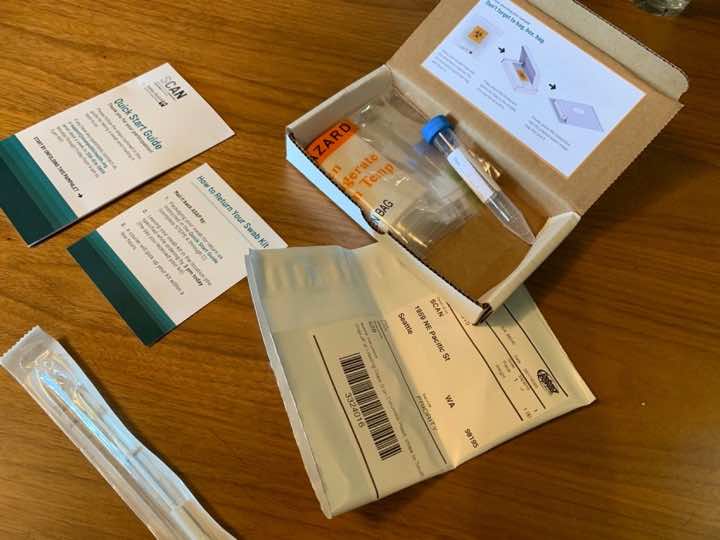Testing myself for COVID-19
For several years, I’ve been a member of the Seattle Flu Study, but because I never got sick I never had a chance to use them. For better or worse (mostly better, I’d say because who wants to be infected by a virus), that means I was not part of any studies they conducted early in the COVID-19 epidemic, when the first case was discovered in the US, not far from my home near Seattle.
Although you’d think I would have been highly likely to be exposed early on, given my China-related work including business travel to Korea in early February, I never had symptoms of anything that would make it worthwhile for me to test myself.
The Seattle Flu Study has since morphed into the Greater Seattle Coronavirus Assessment Network Study and recently they emailed to ask if I’d like to participate in their population assessment. This is a study that includes randomly-selected people like me, i.e. people without symptoms or other reasons to bother getting tested, and it’s useful for science because it helps understand the overall level of infection in the population. If it turns out I’m infected – despite my lack of symptoms – that’s very interesting information to people trying to understand how this virus spreads. If I’m infected, then you’ll want to know if my family members are infected too, and if not, why not. Although we’re mostly still on Lockdown here in Seattle, we do interact with others somewhat, but despite that, we don’t know anyone personally who has become sick. So if we really are infected, then that’s some very good information to know about this virus.
The test kit was hand-delivered to my house the next day.

Figure 1: A look inside the SCAN kit.
It was surprisingly quick and easy:
Another courier came to my house in the afternoon to pick up my sample within hours.
They say it takes 2-3 days to get results, but I had mine in slightly less time. Results of a test I took on Wednesday afternoon were available by early Friday morning.

Figure 2: Negative results for COVID-19
They also sent me a PDF to share with my health provder but it doesn’t say much more, though it does give some details about methods:
This assay is made to detect SARs-CoV-2 using reverse-transcription PCR. This assay uses amplification of the virus segments ORf1B and S and also detects a human RnaseP amplification control.
No word on sensitivity/specificity.
If you’re in the Seattle area, please sign up for yourself!
also check out my Best Resources For Understanding COVID19